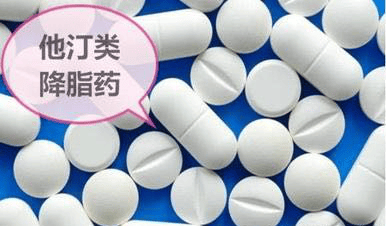In the treatment of cardiovascular diseases, everyone has to mention a type of medication, which is statins, including atorvastatin, rosuvastatin, simvastatin, pitavastatin, and fluvastatin. The widespread use of statins in cardiovascular diseases is determined by the pathological mechanisms of these conditions.
This is because the most common cardiovascular diseases in the elderly are mostly caused by atherosclerosis. The reasons for atherosclerosis are mainly related to the following factors: one category is unchangeable factors, such as hereditary factors and age, which cannot be altered. The other category comprises changeable factors, which can aggravate the occurrence and development of atherosclerosis if not addressed, including smoking, hypertension, diabetes, hyperlipidemia, and lack of exercise. In fact, these can all be categorized as lifestyle-related diseases.
These factors, when combined, will lead to progressively worsening atherosclerosis, resulting in cardiovascular diseases.
Therefore, in treatment, the first step is to combat atherosclerosis, which involves the use of statins.
The main function of statins is to lower total cholesterol and low-density lipoprotein cholesterol, adjust blood lipids, stabilize atherosclerotic plaques, and prevent plaque rupture.
Because atherosclerosis will only continue to worsen, statins generally need to be taken for life.
Statins have several adverse reactions, especially during the early stages of medication, which must be taken seriously:
1. Liver function impairment. Currently, all statins can potentially cause elevated transaminases, and if levels exceed three times the normal limit, medication should be discontinued. Among the statins compared at equivalent dosages, rosuvastatin has the least liver damage, followed by atorvastatin, while simvastatin, pravastatin, and fluvastatin have the most significant liver damage. Guidelines indicate that if there is active liver disease and transaminases are elevated by more than three times, statins are contraindicated; however, chronic liver disease or compensated cirrhosis is not a contraindication.
2. Kidney function impairment. Research data show that long-term use of statins in patients with hyperlipidemia and cardiovascular diseases can significantly reduce the incidence of kidney failure. Statins can modify renal hemodynamics or inhibit inflammatory responses, thereby improving and delaying the deterioration of kidney function. Due to the reliable anti-atherosclerotic effects of statins, they can also reduce urinary protein, confirming their protective role for the kidneys. Kidney damage caused by statins is mainly due to rhabdomyolysis, but this occurs at a very low incidence.
3. Rhabdomyolysis. Taking statins can lead to rhabdomyolysis as a side effect, but the incidence is also very low. If muscle pain, weakness, and stiffness occur, accompanied by dark brown urine, it is highly likely that rhabdomyolysis has occurred, and immediate cessation of medication and medical attention are required. When taking statins long-term, it is recommended to check creatine kinase (CK) every 3 to 6 months. During the initial treatment or after dosage increases, testing should be conducted once every 1 to 2 months. If CK levels progressively rise, exceeding normal values by ten times, medication should be stopped. Some individuals may have normal CK levels but still experience muscle soreness; muscle pain does not necessarily indicate rhabdomyolysis. If it is purely muscle pain, and CK levels show no progressive increase, then it is not rhabdomyolysis.


